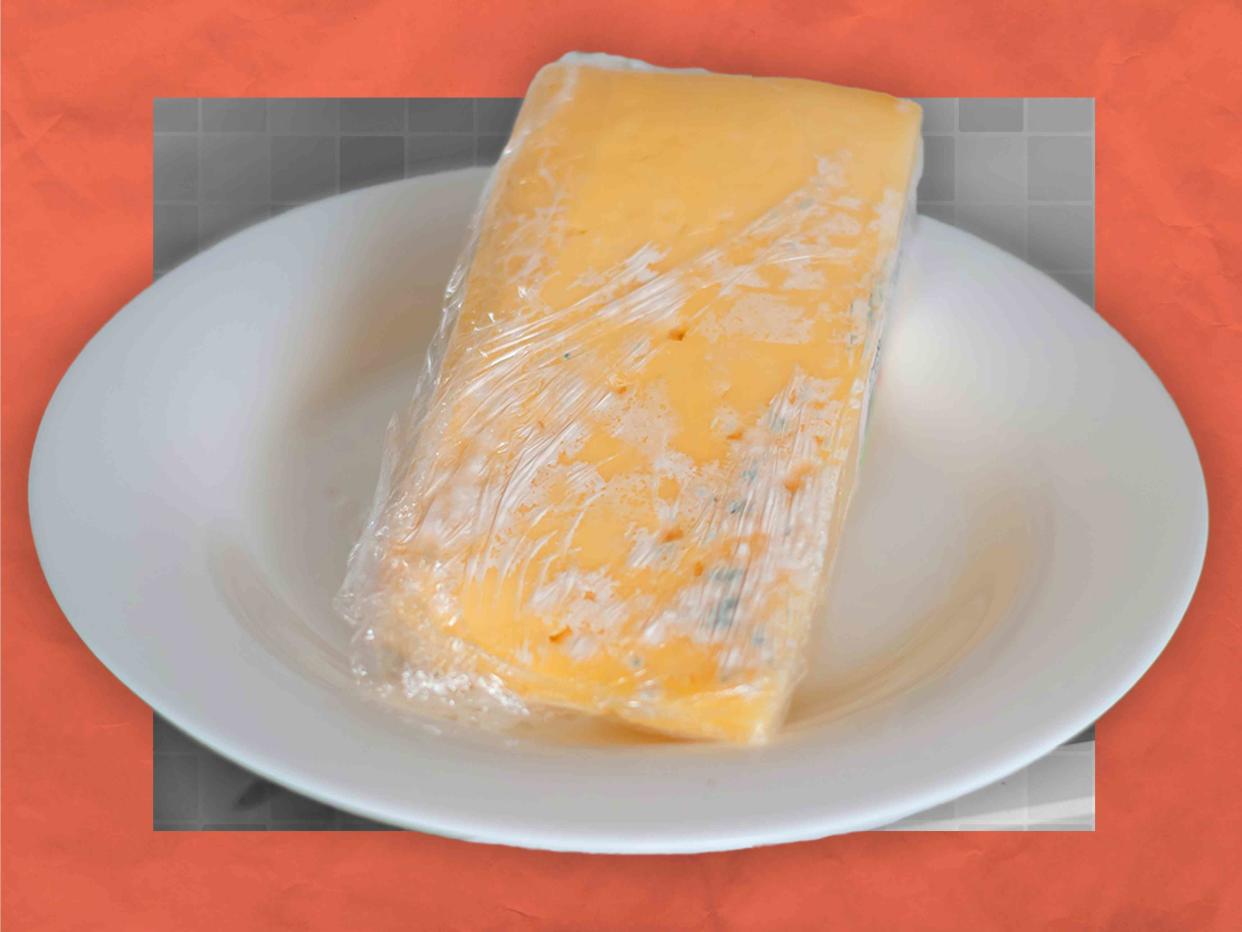Can You Cut The Mold Out of Cheese—Or Should You Throw the Whole Thing Out?
An expert weighs in.

Getty Images/Allrecipes
We’ve all been there: You go to the fridge for a small mid-afternoon charcuterie board, grab your favorite hunk of cheese, and then comes the bad news. It’s moldy. While there are hacks out there to keep cheese fresh for much longer, it’s inevitable that you’ll have to deal with the dairy product going bad a time or two.
So what do you do when you don’t want to throw away a delicious piece of slightly moldy cheese? A common solution is to just cut out the molded portion of the cheese—but is that actually safe? We chatted with some cheese and health experts to get to the bottom of it.
What Are The Signs of Moldy Cheese?
According to Mitizi D. Baum, CEO of Stop Foodborne Illness, signs of spoilage include “green and white mold and pink yeast slime.” The white and green mold can turn slightly fuzzy. You may additionally see black or gray spots, which are also constituted as mold. Make sure to always check for unusual taste, smells (either sour or stronger than usual), textures, and discoloration.
Note that certain cheeses like Roquefort, blue, or gorgonzola will already contain mold and those are inherently safe to eat. Any other types of cheese should not have any sign of mold. Trust your gut instinct—if you feel like something about the cheese is off, then it probably is.
Is It Safe To Cut The Mold Out of Cheese?
Aside from the fact that it’s not generally safe, moldy cheese doesn’t exactly lead to a desirable flavor, so you’ll want to get rid of it. “In cases where the mold growth is limited and spotty, we recommend cutting off the moldy sections to a depth of about ¼-inch underneath, which is typically sufficient to avoid the poor flavor notes that can accompany mold growth,” says Dean Sommer, senior management team member and cheese & food technologist at The Center For Dairy Research.
If the mold growth is significant and has infiltrated the interior of cheese, then throwing it away is the safest bet. Registered dietitian nutritionist, Vandana Sheth, adds that you can cut out the mold for hard and semi-hard cheeses (Cheddar, Swiss, or Parmesan, for example). Avoid cross contamination with the mold and the knife you are cutting with. Soft or fresh cheeses—like brie, camembert, ricotta, or cream cheese—may be penetrated with mold deeper than you’d think and should be discarded completely.
How to Store Cheese To Prevent Mold
Once you cut out the mold, Sheth recommends putting the “newly trimmed cheese in a clean container and store in the fridge (40°F or colder)." Properly storing and wrapping up newly bought cheese is the best way to prevent mold. Wrap the cheese in wax or parchment paper to avoid moisture and put it in a refrigerator drawer. Check out our guide on how long you can keep certain cheeses in the fridge to learn exactly what to do with your cheese.
Read the original article on All Recipes.










